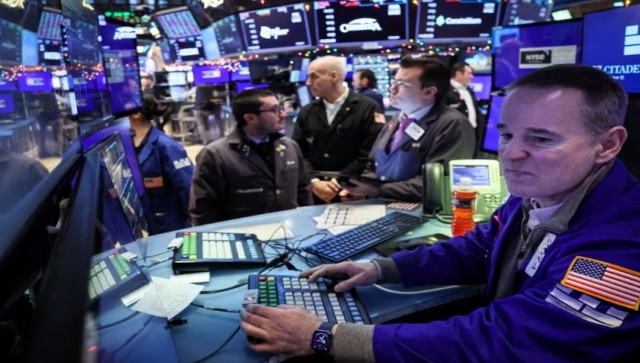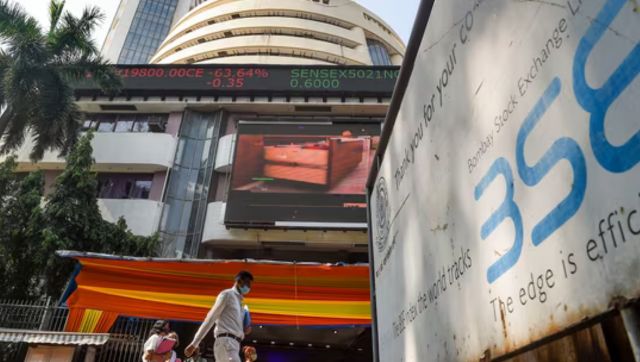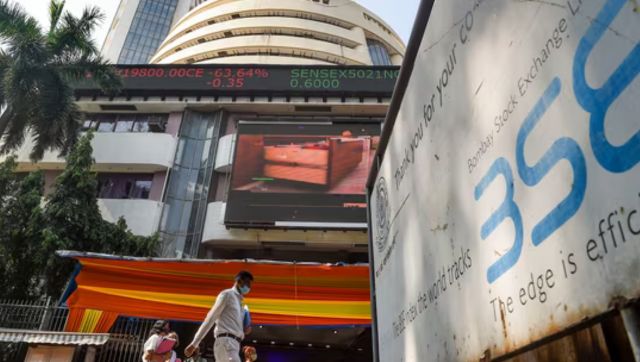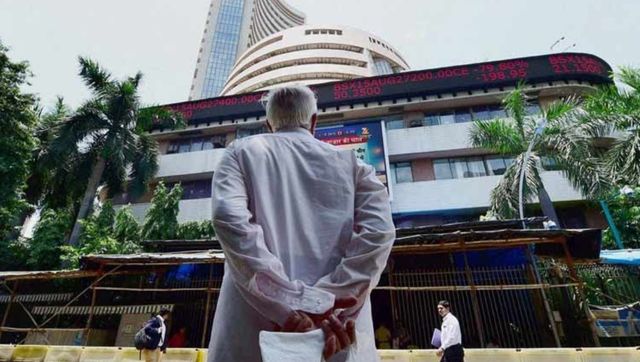What a terrible start to the week. For investors, there were few places to hide. While panic engulfed stock investors, gold soared to a new high, burnishing its reputation as a ‘safe haven’ asset.
Ironically, even US government bonds gained, despite being directly affected by S&P’s ratings downgrade. Crude oil, meanwhile, slumped below $80 a barrel on the New York Mercantile Exchange, while prices dropped below $100 a barrel in Europe.
Here’s a look at what happened in global financial markets.
Equities:
On Monday, selling that began in Asia and Europe accelerated in the United States, where stocks piled up their biggest losses in almost three years after the downgrade of the US credit rating by Standard & Poor’s fuelled concern that the country was barrelling towards another recession.
The Dow Jones industrial average dropped 635 points, or nearly 6 percent, to 10,809.85 on Monday. The Nasdaq Composite Index skidded 174.72 points, or 7 percent, to 2,357.69. The Standard & Poor’s 500 Index slumped 79.92 points, or 7 percent, to 1,119.46. It was the biggest single-day decline since December 2008 for the broader index.
In fact, every single stock on the S&P 500 ended in the red - the first time that has ever happened.
The CBOE Volatility Index, which measures market volatility, surged 50 percent to end at 48. That’s the index’s biggest one-day gain since February 2007 and indicated the high level of investor anxiety.
Bank of America and Citigroup led US lenders to their steepest drop in more than two years . Bank of America, the nation’s largest bank by assets, plunged 20 percent and Citigroup slid 16 percent, leading the KBW Bank Index, down 11 percent. It was the worst showing for the 24-company benchmark since April 20, 2009. Before trading began, American International Group revealed pans to sue Bank of America over faulty mortgages and analysts speculated the bank may need to raise capital.
AIG contends Bank of America caused more than $10 billion in losses at the company, which had specialised in investments and insurance tied to mortgage bonds. Bank of America, which repaid its own government bailout in 2009, rejected AIG’s claims.
Among global indices, MSCI’s all-country world stock index dropped 5.1 percent to its lowest level since September 2010.
Monday’s global stock market sell-off wiped out more than $1.35 trillion in investor wealth worldwide, according to the 5.2 percent drop in the MSCI World Index. The index entered the week with a value of $26.42 trillion.
Equities have been bearing the brunt of panic selling by global investors spooked by data suggesting that the US economy could slip back into recession and Europe’s ever-worsening sovereign debt crisis. There are also concerns about China’s inflation rate, which analysts fear could curb Beijing’s ability to stimulate demand to offset a global slowdown.
On Tuesday, Asian stock markets again opened lower, extending their biggest slide since 2008.
Japan’s Nikkei 225Stock Average fell 4 percent and the broader Topix dropped 3.9 percent. Australia’s S&P/ASX 200 Index lost 4.3 percent at the close of trading in Sydney, after yesterday slipping below the 4,000 level that marks a 20 percent retreat from its April 2010 high. South Korea’sKospi index lost 4.9 percent. If the Korean gauge closes at its current level it will join Australia and China in being said to have entered a bear market .
Expect Indian stock markets to be slammed by these developments today.
Government bonds:
Ironically, investors took shelter in the one asset that was directly affected by the downgrade - US government bonds. Benchmark 10-year Treasury notes, held widely for their perceived high quality, rallied, the yield dropping to 2.32 percent. When bond prices rise, yields fall.
On the other side of the Atlantic, news that the European Central Bank was buying Italian and Spanish government bonds in the latest move to staunch the euro zone debt crisis didn’t provide any relief to investors.
Several major brokerages have in recent days lowered their expectations for USeconomic growth and share appreciation for 2011 and 2012.
Moody’s repeated a warning it could downgrade the United States before 2013 if the fiscal or economic outlook weakened significantly. It said it saw the potential for a new deal in Washington to cut the budget deficit before then.
In India, the yield on the benchmark 7.8 percent notes due April 2021 (10-year bonds) dropped five basis points to 8.26 percent, according to the central bank’s trading system. The yield fell 15 basis points last week, the most since the five-day period ended 3 June, as investors started to believe that the central bank may decide to pause any further interest rate hikes on the back of lower commodity prices. Commodity prices, especially food and fuel prices, are chiefly behind India’s current inflation rate of about 9 percent.
Continues on the next page
Gold:
Gold, a traditional refuge from financial storms, hit a record above $1,724 an ounce on Monday. J P Morgan said on Monday it expected spot gold to climb to $2,500 an ounce or higher by year-end, on very high volatility, following the downgrade of USdebt. The US bank said its previous estimate of $1,800 was “too conservative”.
The prospect of an even longer period of low US interest rates also prompted Goldman Sachs to raise its three-month forecast for the gold price by about $100.
The precious metal has surged 21 percent in 2011, gaining for an 11th year, as the sovereign-debt crisis and a faltering economy boost demand for the metal as a protection of wealth.
Gold is attractive “in this current macro environment, with high risk and uncertainty surrounding the financial markets,” said Bayram Dincer, an analyst at LGT Capital Management in Switzerland to Bloomberg.
“Gold is pricing in the one-notch downgrade as well as a component of lower global GDP growth.”
In India, the largest consumer of the precious metal, gold prices soared past Rs 25,000 per 10 grams - a new high.
Other commodities, including grain and copper, however, continued their downward trend.
Oil:
US crude oil futuresfell below $80 for the first time since October 2010, dropping more than $2, or nearly 3 percent, to trade around $79 a barrel. “In the tumultuous aftermath of the US downgrade from S&P, the world also is downgrading the oil market,” said Phil Flynn, analyst at PFGBest Research inChicago.
The S&P downgrade added to concern about energy demand in the world’s top oil consumer.US petrol demand for July fell to the lowest level since 2003, according to data from the US Energy Information Administration.
“Investors are looking at the weakness in the stock market as it signals that oil demand will be hurt,” said Joe Posillico, broker for MF Global inNew York City. Analysts warned oil prices could fall further if a second recession takes hold, but both Merrill Lynch and Goldman Sachs maintained their 2012 price forecasts.
“We believe that WTI crude oil prices could briefly drop to $50 under a recession scenario,” Merrill Lynch said in a note, but it maintained its 2012 average forecast forU.S.crude at $102 a barrel and its forecast for Brent next year at $114.
Technical indicators also suggested the selling may abate. On the 14-day relative strength index, US oil dropped to 22, the lowest level since the third quarter of 2008 and well below the 30 level often interpreted as a sign a commodity has been oversold. Brent crude also dropped below 30 for the second time this month.
Brent could revisit its 5 August low of $104.30 per barrel, as a medium-term downtrend was expected to develop further, while a bearish target at $81.35 was unchanged for US oil, according to Reuters technical analyst Wang Tao.
With inputs from Reuters


)




)
)
)
)
)
)
)
)